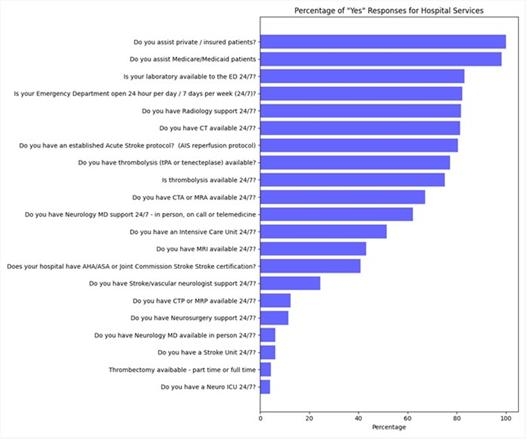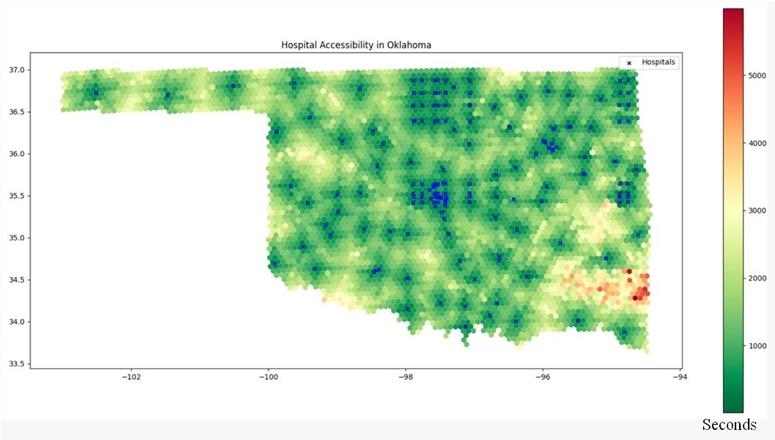Final ID: TP84
Mapping the Access to Acute Stroke Care in Oklahoma - Preliminary Results of the MAPSTROKE Project
Abstract Body: Access to acute stroke care varies widely worldwide, with significant gaps in low- and middle-income countries and in rural areas. Ensuring equitable access requires a standardized approach to identify current coverage and potential sites for new stroke centers. In the U.S., stroke center distribution is inconsistent across states, with around 77% of rural counties deemed "medical deserts" due to a lack of healthcare services. Methods We conducted a comprehensive survey of hospitals in Oklahoma to assess accessibility to acute stroke therapies. We gathered data on the availability of critical resources like thrombolysis, computerized tomography (CT), and neurology services at over 200 facilities. We performed quantitative spatial analysis using a geographic mapping tool to analyze travel distances from each area to the nearest three hospitals capable of providing acute reperfusion therapies to identify regions with limited access. Results We showed that while most hospitals offer emergency services (82%), the availability of specialized stroke care varies markedly (Fig1). For instance, CT/radiology support is available 24/7 in over 80% of hospitals, which is crucial during stroke alerts. However, there is a gap in the availability of advanced stroke interventions, specifically, only 4% of hospitals offer mechanical thrombectomy (MT). Additionally, the availability of Neuro ICU and in-person Neurology support 24/7 is very limited, further emphasizing the disparity in advanced stroke care statewide. Although thrombolysis is available in 77% of the hospitals, their distribution is uneven, with rural and less densely populated areas, particularly in the southeastern region, facing significant challenges in accessing timely stroke care. In these regions, patients face lengthy travel times over one hour to reach hospitals capable of providing basic stroke care, significantly delaying their access to treatments (Fig2). Discussion Limited thrombolysis availability and long travel times to access acute stroke care were found in some regions, placing underserved areas at higher risk of poor outcomes due to these delays. We highlight the need for improved access to stroke treatments, particularly MT, to better serve stroke patients across Oklahoma. Initiatives that apply computational strategies analyzing actual stroke coverage, like the MAPSTROKE project, can guide better placement of future stroke units and standardize stroke center locations to address this issue
More abstracts on this topic:
Advanced Practice Provider Achieves Quicker Door to Needle Time than Neurology Residents
Staltari Concetta, Noah Patty, Heintz Rebekah, Hackett Chris
A Remote Patient Care Heart Failure Program Drives Improved Clinical Outcomes and Reduced Healthcare Cost and UtilizationFeldman David, Reynolds Spencer, Curnow Randall, Cunningham Eve, Feldman Theodore, Fudim Marat
Readers' Comments
We encourage you to enter the discussion by posting your comments and questions below.
Presenters will be notified of your post so that they can respond as appropriate.
This discussion platform is provided to foster engagement, and simulate conversation and knowledge sharing.
You have to be authorized to post a comment. Please, Login or Signup.
Rate this abstract
(Maximum characters: 500)


